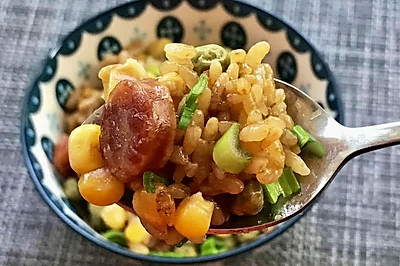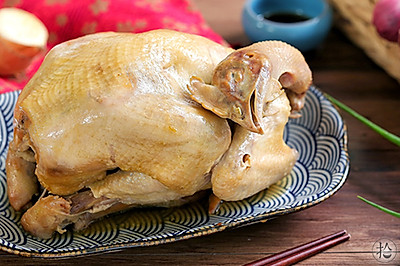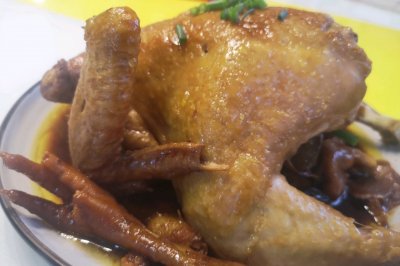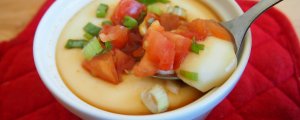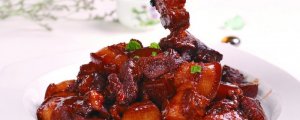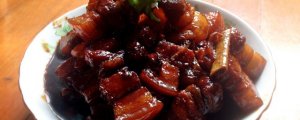
(super detailed) hand brewed rich fragrance [homemade rice wine]
(113197 views)![(super detailed) hand brewed rich fragrance [homemade rice wine]](https://cp1.douguo.com/upload/caiku/1/3/b/yuan_13c6d1b02a43f30100a6f797c732b1eb.png)
Rice wine is also called sweet wine, fermented glutinous rice wine. It is a kind of traditional food in our country. It has been used for more than 2000 years. It is a kind of nutrition and health food loved by the people. Rice wine is clear in color, white in juice, dense in fragrance, sweet and delicious. It's appetizing and refreshing after drinking. Rice wine is rich in vitamins, glucose, amino acids and other nutrients. It has the functions of Invigorating Qi, nourishing blood, activating collaterals and channels, nourishing blood, nourishing Yin, nourishing kidney and moistening lung. It is a good nutrition for all ages. Rice wine has a lot of edible and medicinal value. It is widely used in life. Boil the rice wine with water, add sugar, cool it, then add ice to make a cool drink. This kind of rice wine has a strong taste. It takes a long time to ferment. Of course, the longer it takes, the more fragrant it is. It's too sweet in the supermarket and doesn't taste like wine. When I was a child, my mother would brew a vat of rice wine every winter. There was no heating in the winter in the south. My mother always put thick cotton padded clothes on the VAT and put them on my bed. I don't know how many winters I fell asleep with it
Cooking ingredients
Cooking Steps

Step1:Wash glutinous rice and soak in water overnight.

Step2:Soak the glutinous rice until it can be crushed by hand. It means that the rice is ready to be soaked. Wash the rice thoroughly.

Step3:Use electric cooker to cook rice. Cook glutinous rice. Add more water than less. With the method of boiling, the liquor output is high. Of course, it can also be steamed with a steaming drawer.

Step4:Pour the koji into the cool boiled water. Mix.

Step5:The cooked glutinous rice is cooled to about 30 ℃ in the air. If it is too hot or too cold, the fermentation of koji will be affected.

Step6:Put the glutinous rice into a container without water or oil. One layer of glutinous rice. Sprinkle a layer of koji water. Use a clean spoon to gently compact. Then put another layer of glutinous rice. Sprinkle another layer of koji to compact. Repeat this action all the time.

Step7:Finally, all the glutinous rice is put into the container. The top layer. Pour all the remaining koji water into the container at one time. Cover it. Put it in the room with normal temperature in spring and autumn. It's recommended to put it in the air conditioning room in summer. If it's made in winter, and there's no heating in the room. Remember to keep it warm, keep it warm and ferment it. You can also sleep with it like when I was a child. Haha. The optimal fermentation temperature is 2027 ℃, and the fermentation time is 1520 days. It depends on the environment and raw materials.

Step8:The first day's work is complete. Cover and seal.

Step9:On the third day, we have begun to produce wine juice. It's a saccharification process. Yeast produces alcohol and carbon dioxide during fermentation. The pressure in the barrel is too high. The glutinous rice floats upward and constantly produces carbon dioxide. Therefore, the container for glutinous rice needs to leave two fifths of the space to prevent overflow during fermentation.

Step10:The fourth day. Open the lid. The glutinous rice is covered with white mycelium. It's not bad. It's normal. Stir it with a clean spoon. Then close the lid. Continue to ferment. If you open the lid and see the black mycelium, it is that the pre disinfection is not done well. Basically, it is not necessary.

Step11:On the sixth day, the glutinous rice began to sink. The saccharification gradually turned into alcohol.

Step12:On the 18th day, when the carbon dioxide is no longer emitted, the glutinous rice will sink to the bottom, and the fermentation will be completed.

Step13:Complete the diagram.

Step14:Complete the diagram.
Cooking tips:1. All containers and tools must be clean. No oil, no raw water and no impurities. Otherwise, it will be moldy and hairy. (this is related to the growth conditions of koji. Unclean environment will promote the growth of miscellaneous bacteria. It is found that some glutinous rice is covered with white mycelium. This is not bad. It is a normal phenomenon. If the wine is full of black hair or colorful hair, which operation link should be stained with raw water or oil and not clean, we have to lose and redo. 2. The water added to the rice must be cold or mineral water. Raw water is not good. 3. Different quantity, usage and time of distilling will be different. So please operate according to your distilling instructions. The sweetness and taste of the koji will also be different, so it's important to choose the taste you like. 4. To air the rice, make sure the temperature is about 30 ℃ and add koji water. Hot glutinous rice kills the bacteria. The result is either sour and smelly. Or there is no movement. The middle temperature is too low. Koji
 Chinese Food
Chinese Food